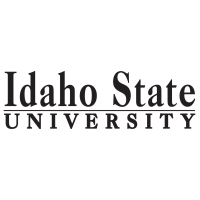In August 2010 we collected one 24 hr drift sample from 12 streams (4 of each disturbance class). From June to August 2011, we collected drift samples twice monthly for 15 streams (5 of each disturbance class). In 2012, we collected samples of stream export from unburned and prescribed fire streams in late May and early September.
To measure downstream export of organic matter, we placed 250 µm mesh drift nets in the thalweg and immediately upstream of its confluence with the main-stem river. For most sample periods, nets were deployed for approximately 24-h during base flow (late July and August). High discharge associated with spring snowmelt, however, precluded continuous 24-hr sampling in May, June, and early July. Therefore, during those months, we sampled 3 times per day (dawn, midday, and dusk). Duration of net deployment ranged from 1 to 180 min. Drift samples were processed monthly for organic matter, sediment, % carbon and nitrogen of organic matter, and invertebrate biomass. Drift samples were processed bimonthly for chlorophyll-a concentrations to capture rapid fluctuations in this metric of organic matter quality. We measured discharge through the nets with a flow meter (+/- 0.01 m/s) (Marsh-McBirney, The Hach Company, Loveland, CO, USA) at the beginning and end of each sample period and at any time the nets were examined for signs of clogging. We calculated the volume of water that traveled through the net during sample periods using averages of water velocities at the beginning and end of each sample period. All invertebrates were removed from drift samples (every other sample: late June, late July, and late August) under a dissection microscope (≥7× magnification). The remaining organic matter was dried (60°C for at least 24 h), weighed, and ashed (500 °C for 4 hrs). Samples were then be rewetted, dried, and reweighed to calculate organic matter as measured by ash free dry mass (AFDM). The weight of sediment, measured as ash (inorganic material) was also calculated.
Data and Resources
| Field | Value |
|---|---|
| Modified | 2019-06-11 |
| Release Date | 2019-06-11 |
| Publisher | |
| Identifier | 91cc63db-20ed-467a-a11b-590f072de2ac |
| NKN Identifier | 35E4DEFB-4FDB-4CAF-B12C-4E7BD2722A68 |
| Temporal Coverage | Sunday, August 1, 2010 - 00:00 to Sunday, September 30, 2012 - 00:00 |
| Language | English (United States) |
| License | |
| Author | |
| Contact Name | Hannah Harris |
| Contact Email | |
| Public Access Level | Public |


![[Open Data]](https://assets.okfn.org/images/ok_buttons/od_80x15_blue.png)